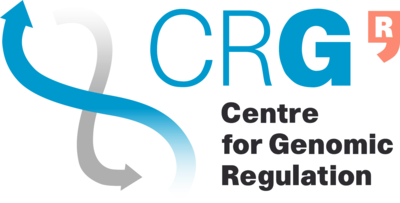Difference between revisions of "Services"
From Bioinformatics Core Wiki
(Created page with "''We currently offer different types of services for internal and external users:'' == Basic services == · Consultation on bioinformatics methods and resources · ...") |
(→Data analysis) |
||
| Line 16: | Line 16: | ||
* High-throughput data analysis of genomics, transcriptomics, epigenetics and proteomics datasets | * High-throughput data analysis of genomics, transcriptomics, epigenetics and proteomics datasets | ||
| − | |||
| − | + | * Next-Gen data analysis. ''The unit has invested time and effort in establishing several pipelines dedicated to the analysis of Deep-sequencing data. Currently, the unit has experience analyzing different types of deep-sequencing data:'' | |
| + | #ChIP-Seq | ||
* Transcription factor binding site detection / motif discovery | * Transcription factor binding site detection / motif discovery | ||
* Analysis of histone modifications | * Analysis of histone modifications | ||
* Identification of target genes | * Identification of target genes | ||
* Data Visualization | * Data Visualization | ||
| − | + | # High-resolution nucleosome positioning | |
| − | + | # Detection of Chromosomal Interactions (5C) | |
| − | + | # RNA-Seq | |
* Differential expression at the gene and transcript level | * Differential expression at the gene and transcript level | ||
* Detection of rare, or novel transcripts | * Detection of rare, or novel transcripts | ||
| Line 32: | Line 32: | ||
* De-novo transcriptome assembly | * De-novo transcriptome assembly | ||
* Data visualization | * Data visualization | ||
| − | + | # Variation Detection | |
* SNP calling | * SNP calling | ||
* Indel calling | * Indel calling | ||
| Line 38: | Line 38: | ||
* Functional impact assessment | * Functional impact assessment | ||
* Data visualization | * Data visualization | ||
| − | + | #De novo genome assembly | |
* Downstream analysis for the interpretation of gene lists, including gene set enrichment, GO and pathway analysis, orthology prediction | * Downstream analysis for the interpretation of gene lists, including gene set enrichment, GO and pathway analysis, orthology prediction | ||
| + | |||
* Identification of functional elements in the genomes: | * Identification of functional elements in the genomes: | ||
** Automatic gene annotation (including non-coding genes) | ** Automatic gene annotation (including non-coding genes) | ||
** Regulatory sequences: DNA motif analysis (novel and known) | ** Regulatory sequences: DNA motif analysis (novel and known) | ||
| − | + | ||
| − | * Multiple Sequence Alignments | + | * Evolution of proteins: |
| − | * Orthology assignments | + | ** Multiple Sequence Alignments |
| − | * Protein structure comparisons | + | ** Orthology assignments |
| − | * Fold Recognition | + | ** Protein structure comparisons |
| − | * Phylogenetic analysis | + | ** Fold Recognition |
| + | ** Phylogenetic analysis | ||
=== Software Development and Data Management === | === Software Development and Data Management === | ||
Revision as of 18:02, 30 October 2012
We currently offer different types of services for internal and external users:
Contents
Basic services
· Consultation on bioinformatics methods and resources
· Software evaluation, implementation, and training
· Customization of bioinformatics resources
· Training on different bioinformatics topics
Advanced services
Data analysis
- High-throughput data analysis of genomics, transcriptomics, epigenetics and proteomics datasets
- Next-Gen data analysis. The unit has invested time and effort in establishing several pipelines dedicated to the analysis of Deep-sequencing data. Currently, the unit has experience analyzing different types of deep-sequencing data:
- ChIP-Seq
- Transcription factor binding site detection / motif discovery
- Analysis of histone modifications
- Identification of target genes
- Data Visualization
- High-resolution nucleosome positioning
- Detection of Chromosomal Interactions (5C)
- RNA-Seq
- Differential expression at the gene and transcript level
- Detection of rare, or novel transcripts
- Identification of alternative splicing and report of isoform abundance
- microRNA / Small RNA analysis (profiling and discovery)
- De-novo transcriptome assembly
- Data visualization
- Variation Detection
- SNP calling
- Indel calling
- Variation filtration
- Functional impact assessment
- Data visualization
- De novo genome assembly
- Downstream analysis for the interpretation of gene lists, including gene set enrichment, GO and pathway analysis, orthology prediction
- Identification of functional elements in the genomes:
- Automatic gene annotation (including non-coding genes)
- Regulatory sequences: DNA motif analysis (novel and known)
- Evolution of proteins:
- Multiple Sequence Alignments
- Orthology assignments
- Protein structure comparisons
- Fold Recognition
- Phylogenetic analysis
Software Development and Data Management
- Database design and development
- Web interface development
- Development of versatile ticketing and project management systems based on wiki technologies
- Implementation of integrative bioinformatics web applications
- Implementation of customized Genome browsers
- Support for submission of raw data to public repositories (ENA, SRA, GEO..)
